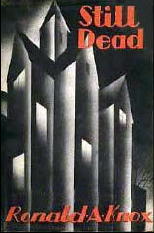February 2009
Monthly Archive
Tue 10 Feb 2009
From today’s emails:
Hi, I have a query….Hope you may be able to help me out… On which Edgar Wallace story / novel was the 1960 Vernon Sewell movie The Man in the Back Seat based? I would appreciate any responses. Thanks. Regards, Ashish Pandey.
Me again:
No online resource seems to say. Or to clarify, Edgar Wallace is always given as the author, but the name of the specific short story or novel the 1961 film’s based on is never stated. It was part of a series of 46 films entitled The Edgar Wallace Mysteries produced by Merton Park Productions.
From http://www.britmovie.co.uk/, here’s a list of the cast members along with the longest recap of the storyline that I’ve found anywhere, in case anyone recognizes it. The director was Vernon Sewell. And believe it or not, I’ve even found a photo from the film that I can show you, but — nothing more re Wallace.
Derren Nesbitt – Tony
Keith Faulkner – Frank
Carol White – Jean
Harry Locke – Joe Carter
Plot Synopsis
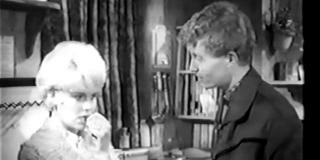
Taut B-movie adapted from an Edgar Wallace mystery with an intriguing premise that’s ingeniously executed by director Vernon Sewell. Sewell outdoes himself with this well-plotted and haunting story of two incompetent crooks and an unwanted passenger which obviously has its roots in the Banquo’s ghost segment of Macbeth.
Two youthful crooks, cold-hearted Tony (Darren Nesbitt) and his compliant best mate Frank (Keith Faulkner), try to rob bookie Joe Carter (Harry Locke) as he is leaving the dog track with his daily winnings. Unfortunately, the two discover that he’s chained the case to his wrist and consequently they are forced to take him along with them as they try to find a way to salvage the money. They drive through the London night looking for an opportunity to break the chain but wind up back at Frank’s house – much to the chagrin of his nagging wife Jean (Carol White). Having beaten the bookie unconscious, the pair douse him in alcohol and dump him near a hospital in the expectation of a passer-by discovering him, but the pair have to retrieve the lifeless bookie when they realise they’ve left fingerprints behind. They return to Jean’s with the body, where a neighbouring back-street doctor declares the bookie practically dead, Tony and Frank drive north to Birmingham to dispose of the body, but on the North Circular the pair encounter a eerie experience.
Sun 8 Feb 2009
In reply to Bill Pronzini’s post on Stephen Marlowe at the the time of his death, David L. Vineyard said —
“As a long time fan of Marlowe I appreciated the tribute. I followed his career from Chester Drum to the later literary novels and enjoyed them all along the way. He may not have been the most popular of the Gold Medal writers, but I always felt the Drum books were a step above the rest, and that he would have been equally at home in hardcovers (which he eventually was).
“The hallmark of the Drum books aside from the settings was always an understated literacy that never got in the way of the action, but gave the best of them a weight sometimes missing from other GM series (no matter how much I enjoyed them).
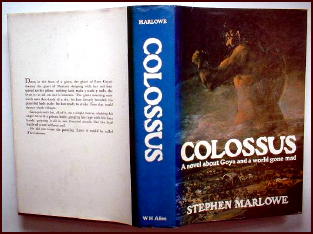
“I always ranked Marlowe with MacDonald, Hamilton, and Charles Williams at the top of the heap in terms of the quality of the product. Of his later novels, two you don’t mention are very good, The Man With No Shadow is reminiscent of a Graham Greene novel, and Colossus, his biographical novel of Goya is a fine work.”
To which Monica responded and asked the following questions:
“Hi, I’ve been a fan of Marlowe’s works for a long time. I specially love his novels on Columbus, Cervantes and Goya, and I can’t understand why he has not received the critical attention his historical narratives, along with all his other works, deserve.
“I wonder if anyone could answer a doubt? Is there any chance the just released film Valkyrie is based on Marlowe’s novel The Valkyrie Encounter?
And do you know if David Lynch’s attempted film on Marlowe’s A Lighthouse at the End of the World did finally come out?
“Thanks so much.”
To which David has responded —
“As far as I know the Lynch adaptation is just another project that never got very far like the Peter Glenville movie of Morris West’s
Tower of Babel or Hitchcock’s film of
From Russia With Love. You might try IMDB since they cover films in production or suspended, and there is likely a site for Lynch, if not an official one then a fan site.
“The term ‘Valkerie’ was the code Von Stauffenberg and the other conspirators used for the attempted assassination of Hitler, so it is most likely just a coincidence that the two have similar names. You might check IMDB for the credits to be certain. There is also a very good novel on the conspiracy by Hans Helmut Kirst (Night of the Generals among others), and I would imagine several non-fiction histories.
“Marlowe’s biographical historical novels did receive quite good critical reception at the time, and if I recall correctly both Colossus and Lighthouse were New York Times Notable Books of the Year, In addition I know he won a major French literary award (the Prix de Concort?). His post-Drum books had very good sales, and I think at least one, Summit, was either a best seller or close to it.
“Today he is somewhat forgotten, but he’s hardly alone in that. Frank Yerby, Edison Marshall, and Samuel Shellabarger all were major best selling writers and little of their work is available, or for that matter Thomas B. Costain or A.J. Cronin. The sad thing is that Marlowe is a bit harder to find because he wasn’t in that superseller category. Still, it’s not had to find many of the Drum books and with a little work probably most of the others can be found as well.
“Barring a major film being based on one of his books there isn’t likely to be much of a revival of his historicals, though the Drum books, and particularly the one he did in collaboration with Richard Prather teaming Drum and Shell Scott, might fare better. At least the Drum books are fairly easy to find on-line and at second hand book stores.”
The following email from Monica closed the discussion, at least for now —
Dear David,
Thank you so much for your useful piece of information. I really appreciate it, and it’s great to hear that Colossus (which I love) was well received in the States. My knowledge/perception from Spain is quite limited in that sense, and it’s quite sad that so few people here know about his novels of “Spanish theme”, so to speak.
By the way, I think it was France’s Prix Gutenberg for best historical novel of the year that he got for The Memoirs of Christopher Columbus.
Thanks again for your reply!
Best regards,
Monica
Sun 8 Feb 2009
RONALD KNOX – The Three Taps. Penguin 1451, UK, paperback, 1960. Hardcover editions: Methuen, UK, 1927; Simon & Schuster, US, 1927.
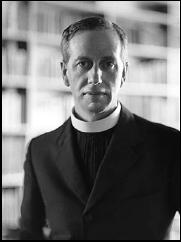
Born in Knibworth, Leicestershire, Ronald Knox was ordained a Roman Catholic priest in 1918, and with The Belief of Catholics in 1927 he became one of the UK’s foremost spokespersons for the religion. As most fans of early detective fiction know, he also dabbled in more mundane matters of more interest to us here. In fact was a prominent member of the exclusive Detection Club for many years, until he was requested by his bishop to cease and desist writing mere mysteries.
He is known perhaps in our circles more for his Ten Commandments for Detective Fiction than for his novels, here they are in short form, as stated in his introduction to The Best English Detective Stories of 1928:
I. The criminal must be someone mentioned in the early part of the story, but must not be anyone whose thoughts the reader has been allowed to follow.
II. All supernatural or preternatural agencies are ruled out as a matter of course.
III. Not more than one secret room or passage is allowable..
IV. No hitherto undiscovered poisons may be used, nor any appliance which will need a long scientific explanation at the end.
V. No Chinaman must figure in the story.
VI. No accident must ever help the detective, nor must he ever have an unaccountable intuition which proves to be right.
VII. The detective must not himself commit the crime.
VIII. The detective must not light on any clues are not instantly produced for the inspection of the reader.
IX. The stupid friend of the detective, the Watson, must not conceal any thoughts which pass through his mind; his intelligence must be slightly, but very slightly, below that of the average reader.
X. Twin brothers, and doubles generally, must not appear unless we have been duly prepared for them.
The longer version with commentaries and suggested exclusions, et cetera, can be found here.
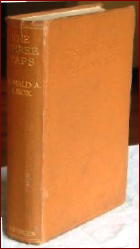
Ronald Knox produced only six detective novels of his own, all but the first solved by one Miles Bredon, an insurance investigator for the Indescribable Company. This makes him a sleuth very much like a private eye in nature, but he’s no mean streets kind of guy. Small village life is the setting of The Three Taps, and along with him is his wife Angela, and I have to admit, she’s no slouch as a detective either.
Slowing the book down in the beginning is a long rambling preamble that assumes, first of all, that the reader knows what an Euthanasia policy is. I couldn’t find a single reference to such an agreement on the Internet, but I probably ran out of patience before I should have. From the context, though, I finally gathered that it was an insurance contract that before the policy holder reached the age of 65 paid off on the his or her death in the usual fashion, but then turned into an annuity making regular payment to the survivor, if he did.
Of course if the policyholder commits suicide before the age of 65, the heirs get nothing. This is the crux of the story. A man named Mottram, the holder of such a policy, is found dead of gas poisoning in the room in the inn which he was staying while on a vacation fishing trip. He’s under 65, but recently he’d tried to buy out his policy from Bredon’s insurance company, telling them that a doctor had given him only a few months to live.
Bredon makes a bet with his friend Inspector Leyland. Breton says his death was suicide (so his company doesn’t have to pay off), and Leyland says it was murder. And with the wager in mind, each looks for clues to back his version of what really happened.

It’s a complicated matter, and a beautifully constructed one, with lots of clues mixed in with the red herrings, double bluffs, hidden motives and of course no one tells (all) the truth. The denouement is even more complicated, so far as to be unreal, but truth (and fate) certainly does fall in strange and unexpected ways, so who am I to argue?
Besides the Euthanasia policy to confound the present-day reader, the matter also depends greatly (and quite naturally) on the gas taps in the dead man’s room: which of the three were on, and which were off, and when and why. For all except the last, or “why,” it would take a mathematician to follow the logic, but I plead guilty and admit that I fell asleep at the switch.
Overall then: this tale is definitely dated — much of the current crowd of mystery readers isn’t going get very far into this one — but it’s their loss. This is a beautifully and wonderfully constructed detective story.
Bibliographic data:
[Taken from the Revised Crime Fiction IV, by Allen J. Hubin.]
KNOX, [Monsignor] RONALD A(rbuthnott). 1888-1957. Series character: Miles Bredon, in all but the first.
The Viaduct Murder (n.) Methuen 1925.
The Three Taps (n.) Methuen 1927.
The Footsteps at the Lock (n.) Methuen 1928.
The Body in the Silo (n.) Hodder 1933.
Still Dead (n.) Hodder 1934.
Double Cross Purposes (n.) Hodder 1937.
Sat 7 Feb 2009
Jim Goodrich, a good friend of mine died this morning. He died peacefully in a Albuquerque hospice around 1 a.m. His daughter Jill and her husband Kevin were at his bedside. He was 81 years old.
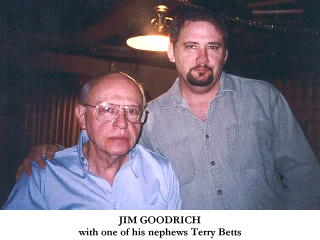
Jim was an avid mystery reader and an equally avid movie buff, and he had been all his life. I’ve known him for something like 35 years, and while he never wrote any long articles or reviews for Mystery*File, he was always a strong supporter of my efforts from the first issue on. He invariably had something to say about the previous issue in the letter column of the next one.
I met him in person the first time at the 1977 New York City Bouchercon, and we became even closer friends as time went on. We drove together to a PulpCon in Cherry Hill NJ in 1981 — he still lived in New Paltz NY at the time, where he was an academic librarian — and we attended several Friends of Old Time Radio conventions in Bridgeport CT and Newark NJ together, always having many many things to talk about and to catch up on. After he retired and moved to New Mexico, we only saw each other at PulpCons, either in Bowling Green or Dayton OH once a year, but we kept in constant touch, first by letters and postcards, then by email.
Our interests overlapped in mystery fiction and pulp magazines, although his centered primarily on the hardboiled kind; old-time radio, movies, traditional jazz, religion, politics, and you name it, pop culture and nostalgia of every kind and variety.
Jim had been undergoing radiation and chemotherapy treatments for the past several years, but he was a cheerful survivor. He was, in fact, planning to attend PulpCon again last year, but he was hospitalized the weekend before, a sore blow to him. He wouldn’t have missed it otherwise.
He never went home again. He was transferred to a hospice within a week, but he rallied and was moved to a place where he could receive physical therapy, and he spent the last six months of 2008 there. From December on, his condition deteriorated again rapidly.
Jim, I’ll miss you.
____
From the online edition of the Albuquerque Journal:
GOODRICH — James R. “Jim” Goodrich, 81, of Albuquerque, died February 7, 2009 after a three-year battle with cancer. A retired librarian, Jim was an aficionado of Jazz, Cinema, Art, Pulp Fiction, Mysteries, and Comics; and an active supporter of numerous progressive causes and candidates. His intelligence, dry sense of humor, and patronage of numerous local restaurants, bookstores, and other establishments earned him many friends and admirers in the area. Jim was born in Toledo, Ohio, on September 12, 1927, the son of the late J.R. and Florence Goodrich. He earned a Bachelor’s degree from the University of Toledo and a Master’s of Library Science from Rutgers University. In 1990 he retired after more than 20 years as a librarian at the State University of New York at New Paltz and moved to Albuquerque. Jim is survived by his daughter, Jill Goodrich, and her husband, Kevin O’Connell, of Silver Spring, Maryland; his son Victor Goodrich of Philadelphia; his sister and brother-in-law, Lois and Edward Betts, of Northridge, California; his nephews, Tom Betts and Terry Betts, of California; and his niece, Ellen Betts, of Arizona. He was predeceased by his son Scott in 1974. Burial will take place at a date to be determined in New Paltz, New York. Donations in Jim’s name may be made to Presbyterian Healthcare Services (Albuquerque) Hospice division, the American Cancer Society, Planned Parenthood, or any environmental or wildlife charity.
Thanks to Terry Betts for allowing me the use of the photo above.
Sat 7 Feb 2009
THE CURMUDGEON IN THE CORNER
by William R. Loeser
VICARS BELL – Death and the Night Watches. Douglas Baynes #5. Faber & Faber, UK, hardcover, 1955. British Book Centre, US, hardcover, 1962
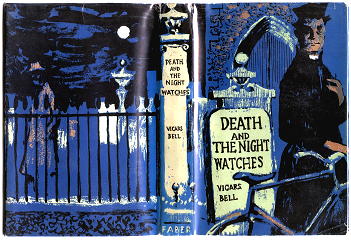
Death and the Night Watches by Vicars Bell is another of that enjoyable sub-genre, the English village murder, chock-a-block with well-distinguished local characters, much like The Nine Tailors without Wimsey.
Here the detective is Douglas Baynes, an entomologist who lost a leg in World War II, assisting a couple of interesting members of the official staff, and the problem: who shot a local farmer and bully, beat his head to a pulp, and left his body in the churchyard? His death is the greatest relief to his sister, a member of the walking dead, and her daughter, still hopeful and in love.
The vicar, a believer in the militant church, thinks her boyfriend did it and tries to cook the evidence. Baynes sees through this and puts the romance back on the tracks, but he and the author can’t figure out who did do the crime.
At last, a portion of the cast reveal themselves as villains and, against their best interests, kidnap Baynes, so there can be a smash ending, complete with a boat race and a helicopter.
? From The MYSTERY FANcier, Vol. 3, No. 4, July-Aug 1979 (slightly revised).
[Editorial PostScript.] This a scarce book. After reading Bill’s review, I went hunting for a copy, and I found one, the cover of which you see above. At the moment I am typing this, there are now none.
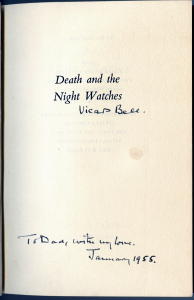
I’m sure I was the lucky recipient of a bookseller’s error. I paid less than $10. Of Vicars Bell’s six mysteries (see below), only two of them are available online, and one is offered in the $200 range. And not only does mine have the dust jacket, it turns out that it is inscribed by the author to his father in 1955.
For more about Vicars Bell, Contemporary Authors describes his career thusly: “Spaldwick Council School, Huntingdon, England, headmaster, 1927-29; Little Gaddesden Church of England School, Little Gaddesden, Berkhamsted, England, headmaster, 1929-62. Lecturer at University of London, University of Birmingham, Oxford University, and Cambridge University; also lecturer in Isreal and public lecturer in England. Founder of Little Gaddesden Parish Council, lay reader for Diocese of St. Albans.”
Fifteen books are listed in CA as having been written by Vicars Bell, which sounds like a pseudonym but is not, including the six detective novels previously mentioned. Other work includes such titles as Little Gaddesden: The Story of an English Parish, 1949, and On Learning the English Tongue, 1953.
Bibliographic Data —
[Taken from the Revised Crime Fiction IV, by Allen J. Hubin]
BELL, VICARS (Walker). 1904-1988. Series character, in all titles: Douglas Baynes.
Death Under the Stars (n.) Faber 1949.
Death Has Two Doors (n.) Faber 1950.
Two by Day and One by Night (n.) Faber 1950.
Death Darkens Council (n.) Faber 1952.
Death and the Night Watches (n.) Faber 1955.
Death Walks by the River (n.) Faber 1959.
Fri 6 Feb 2009
WRITING NERO WOLFE,
by Lee Goldberg.
INT. BROWNSTONE — WOLFE’S OFFICE — DAY
Archie sits at his desk, OILING HIS TWO MARLEY .38s. As we hear his voice-over, he switches to OILING HIS TYPEWRITER with the SAME OIL.
ARCHIE’S VOICE
Nero Wolfe is a creature of habit. Every morning, from nine until eleven, he tends his 10,000 orchids and I, Archie Goodwin, his confidential secretary and legman extraordinaire, tend to business. And since there wasn’t any business to tend to, I was preparing for action — if and when it ever came.
The PHONE RINGS. He answers it.
I can’t tell you how much pleasure it gave me to write those words, the opening scene of the A&E adaptation of Rex Stout’s Nero Wolfe novel “Champagne for One.”
For one thing, I’ve been a fan of Nero Wolfe since I was a kid. The Brownstone on West 35th Street where Nero Wolfe and Archie Goodwin live and work in New York City was as real to me as my family’s suburban tract home in Walnut Creek, California. I read each and every book, reveling in Archie’s amiable narration, his lively banter with Nero Wolfe, and Wolfe’s wonderfully verbose and brilliant speeches. While I may have been underwhelmed, even as a teenager, by Stout’s lazy plotting, I loved the language and, most of all, the relationship between Wolfe and Archie. I never dreamed I’d have a chance to write those characters myself. And, in the case of that opening, to write new words in their voices, at least as I’ve always heard them.
It was a screenwriting assignment unlike any other that my writing partner, William Rabkin, and I had ever been involved with. Because “Nero Wolfe,” starring Maury Chaykin as Wolfe and Timothy Hutton as Archie, was unlike any other series on television. It was, as far as I know, the first TV series without a single original script — each and every episode was based on a Rex Stout novel, novella, or short story. That’s not to say there wasn’t original writing involved, but it was Stout who did all the hard work.
Everyone who wrote for “Nero Wolfe” was collaborating with Rex Stout. The mandate from executive producers Michael Jaffe and Timothy Hutton (who also directed episodes) was to “do the books,” even if that meant violating some of the hard-and-fast rules of screenwriting.
Your typical hour-long teleplay follows what’s known as a four-act structure. Whether it’s an episode of “The West Wing” or “CSI,” the formula is essentially the same. But “Nero Wolfe” ignored the formula, forgoing the traditional mini-cliffhangers and plot-reversals that precede the commercial breaks.
Instead, we stuck to the structure of the book, replicating as closely as possible the experience of reading a Rex Stout novel (which, sadly, few viewers under the age of 50 have ever done).
In the highly competitive world of primetime network television, and in an era of “MTV”-style editing, it helped “Nero Wolfe” stand apart (and, perhaps, sealed its doom). “Nero Wolfe” required the writer to turn off most of his professional instincts and, instead, put all his trust in the material — which was a whole lot easier if you were already a Nero Wolfe fan.
“It’s amazing how many writers got it wrong,” says Sharon Elizabeth Doyle, who was head writer for “Nero Wolfe.” “I mean very good writers, too. Either you get it or you don’t. It’s so important to have the relationships right, and the tone of the relationships right, to get that it’s about the language and not the story. The characters in these books aren’t modern human beings. You have to believe in the characters and respect the formality of the way they are characterized.”
That doesn’t mean writers for the show simply transcribed the book into script form. It can’t be done. There’s no getting past that a novel and a TV series are two distinct, and very different, mediums. The writer’s job on “Nero Wolfe” was to adapt Rex Stout’s stories into scripts that could be produced on a certain budget over a seven-day schedule on a particular number of sets and locations. Beyond that, the writer had to re-tell Stout’s story in the idiom of television. By that, I mean the story had to be shown not told, through actions rather than speech, which isn’t easy when you’re working with mysteries written in first-person that are mostly about a bunch of people sitting in an office and talking. And talking. And talking. It’s very entertaining to read it, but can be deadly dull if you have to watch it.
Our first step in the adaptation process was the most fun — we’d sit down and read the book for pure pleasure, to get the feel and shape of the story (I couldn’t believe someone was actually paying me to read a book that I loved!)
After that, the real work started. We’d sit at the laptop and briefly jot down notes on the key emotional moments of the story, the major plots points, the essential clues, and most importantly, whatever the central conflict was between Wolfe and Archie. We’d also make notes of an obvious plot problems (and there were many). Once we were done with that, we were ready to read the book again, only not as readers but as literary construction workers who had to figure out how to take the structure apart and rebuild it again in a different medium.
We”d go through the book page-by-page, highlighting essential dialogue while writing a scene-by-scene outline on the computer as went along. We used the outline, combined with our previous notes, to get a firm grasp on the story, to see what scenes had to be pared down, combined or removed. Within scenes, we looked for ways the dialogue could be tightened, simplified or re-choreographed to add more momentum, energy and movement to the episode. And we’d do all this while keeping one thought constantly in our minds: stick as closely to the books as you can.
More often than not, that meant loyalty to the dialogue rather than to the structure of the plot or the order, locations, or choreography of the scenes. Because the first thing we discovered as we took apart Stout’s stories and put them back together again was how thin and clumsily plotted the mysteries are — a weakness that seems to be more easily hidden in prose than it can be on camera (which is one reason plots are so often reworked in the movie versions of your favorite mysteries).
“Television does seem to make the plot problems more glaring. The Nero Wolfe mysteries, generally, are very weak,” says novelist Stuart Kaminsky, who adapted the novella “Immune to Murder” into an episode. “Wolfe seldom does anything brilliant. We are simply told he is brilliant and are convinced by his manipulation of people and language. His is a great act.”
Any avid reader of the Stout books soon discovers that there are three ways Wolfe will solve a mystery:
a) Wolfe either calls, mails, or in some other way contacts all the suspects and accuses each one of being the murderer, then waits for one of them to expose him or herself by either trying to steal or retrieve a key piece of evidence — or trying to kill Archie, Wolfe, or some other person Wolfe has set up as bait.
b) Wolfe sends his operative Saul or Orrie to retrieve some piece of evidence that is with-held from Archie (and, by extension, all of us) and revealed in the finale to expose the killer.
c) Wolfe uses actual deduction.
The challenge in adapting the Nero Wolfe stories for television was obscuring those plot problems by playing up the character conflicts and cherry-picking the best lines from Wolfe’s many speeches. The plots became secondary to the relationships and the uniqueness of the language. The vocabulary was never dumbed down or simplified for the TV audience, which is why the series felt so much like the books.
“There is a pleasure in Wolfe’s speeches, what we call the arias,” says Doyle. “Wolfe has lots of them, the trick is isolating that one aria you can’t live without.”
In the novel “Too Many Clients,” which Doyle adapted for the show, there was one Nero Wolfe speech that she knew had to be in the episode:
“A modern satyr is part man, part pig, part jack-ass. He hasn’t even the charm of the roguish; he doesn’t lean gracefully against a tree with flute in hand. The only quality he has preserved from his Attic ancestors is his lust, and he gratifies it in the dark corners of other men’s beds or hotel rooms, not in the shade of an olive tree on a sunny hillside. The preposterous bower of carnality you have described is a sorry makeshift, but at least Mr. Yeager tried. A pig and a jack-ass yes, but the flute strain was in him too, as it once was in me, in my youth. No doubt he deserved to die, but I would welcome a sufficient inducement to expose his killer.”
Where else on television do you find a character who talks like that? No where. Not before “Nero Wolfe,” and not now that it has been cancelled.
“There is one thing we did that nobody else is doing. We played with the language and had a good time doing it,” Doyle says. “Most TV language is very minimalist.”
She’s right. When was the last time you heard a TV character use satyr and bower in casual conversation? I’m not surprised “Nero Wolfe” was canceled. Perhaps the creative choices that were made, while respecting the material, were wrong for TV. Not because audiences are stupid, but because television is, ultimately, not a book, and certainly not one written in the 1940s. By design, the show had a dated feel, one that may have alienated all but the oldest viewers and the most avid Wolfe fans.
That said, and with my obvious biases showing, I think the series, and especially the performances of Maury Chaykin and Timothy Hutton, will be recognized as the definitive dramatic interpretation of “Nero Wolfe,” the one any future movie or TV incarnations will be measured against. And I was honored to be a part of it.
Lee Goldberg was nominated for an Edgar Award by the Mystery Writers of America for his work on “Nero Wolfe.” This article first appeared in Mystery Scene magazine and is reprinted with the author’s permission.
Thu 5 Feb 2009
THE DOORBELL RANG. Made for TV. A&E Network, 22 April 2001. Season 1, Episode 1 of A Nero Wolfe Mystery. Tim Hutton (Archie Goodwin), Maurie Chaykin (Nero Wolfe), Bill Smitrovich (Inspector Cramer), Saul Rubinek (Lon Cohen), Colin Fox (Fritz Brenner), Conrad Dunn (Saul Panzer), Fulvio Cecere (Fred Durkin), Trent McMullen (Orrie Cather) R.D. Reid (Sergeant Purley Stebbins). With Debra Monk, James Tolkan, Francie Swift, Robert Bockstael, Nicky Guadagni, Gretchen Egolf. Based on the novel by Rex Stout. Teleplay: Michael Jaffe. Director: Timothy Hutton.
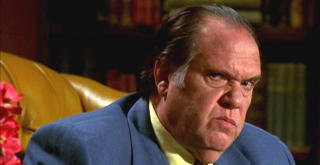
I haven’t been talking to you about most of the television shows I watch — the regular series fodder, almost all of it on DVD — but in this case I’m making an exception.
As indicated above, this two hour adaptation of one of Rex Stout’s most highly rated Nero Wolfe novels — and some would say that it is his best — was the first episode of the finest TV series ever based on the works of an American mystery writer.
Is there one that I’m not thinking of? One that’s better than this? I don’t think so, and I’ll get back to this in a minute.
There were two seasons of A Nero Wolfe Mystery, preceded by a pilot film, The Golden Spiders, which premiered on March 5, 2000. There were 27 episodes in those two season, filming in delightful fashion eight novels, seven of them in two parts, and 12 novellas. For a hint of how well staged and photographed the settings and the players are, I’ll add a half-dozen scenes from the film, but keep in mind that it’s only a hint.
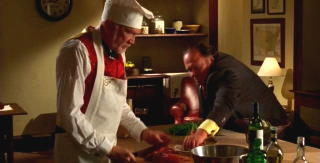
The story in The Doorbell Rang is relatively simple, at least on the surface. I could do a more detailed synopsis that would include all of the complexities, but after several minutes thinking about it, I’ve decided to keep it, as I say, simple.
A wealthy woman has read a book critical of the FBI and its activities and has been sending books to friends and people in high power across the country. (The book is real: The FBI Nobody Knows, by Fred J. Cook, 1964, Macmillan.) Convincing that the FBI is retaliating by having her followed and tapping her phones, she hires Wolfe to get them off her back.
Inspector Cramer gets involved, and so does the unsolved murder of a newspaper writer who was supposed to have been writing a series of articles about the FBI, also critical of the way J. Edgar Hoover was using his position of power. Wolfe needs leverage, and solving the murder is one way of getting it.

I taped this series, both seasons, while it was on, but I never watched any of them, except in passing. Once on tape, though, you can fast-forward through the commercials — a big advantage, as far as I’m concerned — but on the other hand, once on tape, you’ll never find the time to go back and watch them — again as far as I’m concerned. (I don’t know about you.)
So I never really saw any of the series until now, after I purchased the complete A&E set during a recent pre-Christmas sale at well over 50% off, an absolute bargain. This is a shameful admission, I admit, because as I stated above, I can’t think of a better adaptation of an American mystery series into TV or movie form than this A&E production. (A previous version of Nero Wolfe with William Conrad and Lee Horsley isn’t it.)
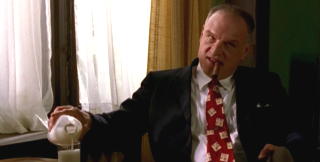
Raymond Burr’s Perry Mason comes close, but I think the TV version was on the air so long that Erle Stanley Gardner started writing his books with Burr in mind, rather than the other way around.
I stand to be corrected, and any and all suggestions are welcome.
I believe that all of the stories in the A&E version, which I will be referring to from now on, are altered into taking place in the 1950s — and absolutely beautifully photographed, by the way — no matter when the books themselves took place. The Doorbell Rang was published in 1965, for example. (I may be in error in saying this. See the comments.)
No matter. For the most part, Stout’s stories are timeless. It’s the people in them, who don’t really change all that much over the years, and (for example) the interior of the Manhattan-located brownstone where 80% of the stories take place, that’s what’s important.
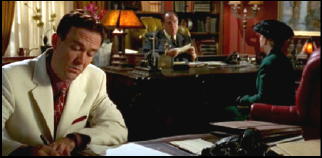
Wolfe’s yellow shirts, that is, the dining room, the orchid room, and Wolfe’s office, complete with the large globe, Archie’s desk at an angle to Wolfe’s, the chairs that can be rearranged facing the great detective, the hidden peephole designed so someone not in the room can look and listen in without being discovered — all wonderfully rendered, even though in my mind’s eye I had everything mirror-image reversed, left and right.
The apartment is also much larger than I pictured it. I sensed tighter quarters.
And whole chunks of dialogue from the book appear to have been repeated verbatim. (I haven’t checked, but I’d be mildly surprised if I’m wrong.)
As for the players, some brief impressions: Maurie Chaykin is — how shall I say this? — the right girth and weight, but he’s not nearly as handsome as I see Wolfe, but I have an idea that as I lend an eye to more of the episodes, how I see Wolfe and the others will start to change. What Chaykin does have is the eccentric genius concept down pat.
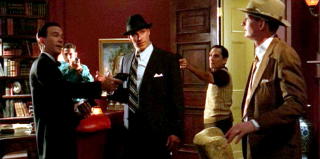
Tim Hutton as Archie? Near perfect. His stride seems a little too jaunty to me, and his hat is too big. Of course I (as well as everyone else) am no longer used to seeing anyone wearing a wide-brimmed hat. Colin Fox as the live-in cook, Fritz Brenner, is perfect. Bill Smitrovich as Inspector Cramer seems a little too agitated to me; I seem to think of him as a calmer sort of fellow, not that Nero didn’t usually get under his skin, and badly.
The others of the regular cast generally weren’t on the screen long enough to say aye or nay, but if it turns out to be nay for any of them as I watch my way through the series, I will be greatly surprised.
From the general reaction that this series has produced from readers and critics alike, I don’t suppose I’m saying anything very much new here. I regret being so long to catch up with everyone else, but I’m glad I have.
Wed 4 Feb 2009
A recent post on Carter Brown sort of lost its way and led into a discussion of Leo Tolstoy’s War and Peace. Herewith we pick up the comments that ensued about two-thirds the way through. Follow the link to the original post and the comments that produced the exchange below.
First, David L. Vineyard:
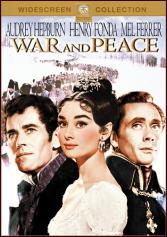
Re the 1956 [filmed version of]
War and Peace, it is certainly the least of the three major versions of the book, but I would at least point out one excellent scene with Henry Fonda and John Mills (as a serf) that verbalises much of what Tolstoy was trying to say. Though you may not want to sit through a 3.5 hour movie to get to it (sort of the Classics Illustrated version, though pretty to look at, and with a great cast).
You probably know the famous (though no doubt spurious) story regarding War and Peace. Tolstoy intended the book to include all aspects of Russian life, and had labored on it in a effort to reflect that. On the night the books was to go to press he supposedly went to bed satisfied that he had achieved his goal only to sit up in bed in the middle of the night in a cold sweat and trembling.
“What’s wrong?” a frightened Mrs. Tolstoy asked.
“My God,” Tolstoy gasped. “It’s a disaster!”
“What? What’s a disaster?” his wife asked.
“It’s a disaster! I left out the yacht race!”
I think every writer can appreciate the feeling. Hard to believe we started out with Carter Brown. This may be the only time in history a discussion of Danny Boyd and Al Wheeler led to Tolstoy and film criticism.
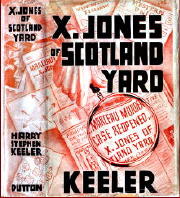
Still, to bring it back around to the mystery, does anyone know what the longest mystery novel ever published is (not written — I’m sure there are some doorstops in forgotten drawers)?
My guess would be a Victorian Triple Decker or perhaps something by Harry Stephen Keeler.
Though not strictly a mystery my vote would be for Eugene Sue’s Mysteries of Paris that runs to some 1200 pages in the Modern Library translation. But if we limit it to books that were written as part of the genre and for the genre, then I’d be curious to know what the War and Peace of the genre (or the Ben Hur) was.
To which Walker Martin responded:
The basic problem with trying to find the
War and Peace of the mystery/detective genre is that such novels usually limit themselves to the basic mystery or detective plot. And because lovers and fans of the mystery genre demand certain cliches, rules, regulations, etc, then mystery novels tend to limit themselves to certain plots, characterizations, dialog, having to do with the mystery.
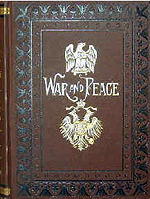
This of course limits the subject matter and length of the novels, otherwise the mystery audience might not buy the book thinking it too “literary” or not really a mystery, etc.
Mystery/detective fans, for the most part like to see certain formulas and cliches in their stories. For instance the Carter Brown fan likes to see wisecracks, hardboiled action, beautiful women. Same thing with the hardboiled private eye fan. The puzzle lover likes Ellery Queen, John Dickson Carr, Agatha Christie, etc. The cozy lovers, the cat lovers, the spy fiction fans, all have their favorite formula that they like to keep reading about.
There are some readers, like Steve Lewis, myself, and others, who read all types of mystery fiction, though I do lean toward the hardboiled, private eye, wise-cracking type. I think for most mystery readers, they don’t want to read a War and Peace type length mystery novel. They want the usual 150 to maybe 400 page plot concentrating on mystery elements. If other elements enter into the novel, such as the elements in War and Peace, then the novel is no longer a mystery novel and becomes instead a literary or mainstream fiction novel.
So I guess we can find “long” mystery novels like The Long Goodbye by Chandler, etc. But a mystery novel with all the themes that are in War and Peace, then many readers would simply say that’s not a mystery novel. It may have mystery elements and a detective, but only as a part of the main plot, which could be about all sorts of subjects.
Wed 4 Feb 2009
In one of the comments that he left following my recent review of a Jessica Fletcher novel, David Vineyard asked the following question:
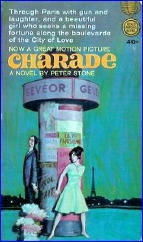
“Though it is only vaguely related, perhaps someone can answer a question for me. The novelization of the film
Charade (Gold Medal, 1963) is credited to screenwriter and playwright Peter Stone (
1776, among others), but the book is dedicated to suspense novelist Marc Behm (
Eye of the Beholder).
“I know in many cases when a book is dedicated to another writer it’s the ghostwriter signing his work (William Shatner’s Tek World books being dedicated to Ron Goulart being a good example).
“Since Stone wrote no other novels I was curious if the book is his work or Behm’s. Anyone know? I believe Hubin lists it as Stone’s work.”
Here’s the present entry for the book as it appears in the Revised Crime Fiction IV:
STONE, PETER H(ess). 1930-2003.
Charade (Gold Medal, 1963, pb) [Paris] Fontana, 1964. Novelization of film: Universal, 1964 (scw: Peter H. Stone; dir: Stanley Donen).
I sent David’s question on to Al Hubin, and here’s his reply. While it’s certainly not conclusive, it is informative:
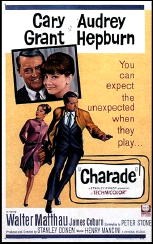
Steve,
Interesting question.
I’ve checked the Contemporary Authors entry on Behm, which has an incomplete listing of his works, but does say ‘also author with Peter Stone of “The Unsuspecting Wife.”’
This appears to be the story upon which the film Charade is based (and IMDB gives both Stone and Behm as authors of the story). It’s not clear that “Unsuspecting Wife” was published separately anywhere. But the co-authorship of the story could explain why the novelization is dedicated to Behm. The novelization is not listed in Behm’s entry, but it is listed in Stone’s CA entry as written by Stone.
[PostScript.] Lee Goldberg recently left two or three additional comments about TV and movie adaptations and tie-in’s following that Murder, She Wrote review. Since he’s the man in the know, if you haven’t already read what he has to say, then by all means do.
Tue 3 Feb 2009
You may recall, if you’ve been reading this blog long enough, that I had to find a new doctor to handle my chronic thyroid problems after I fired my old one. Thanks to a fellow patient of my primary care physician, one was recommended to me, and I finally saw him two weeks ago yesterday.
The experience was very positive. I’ll say that first. Not only had he had my complete file sent over from the fellow who shall remain nameless — but whose name I will tell you in order to avoid him if you live anywhere in this area — but he (the new doctor) had actually read it.
As we talked through the problems I’d been having — and he went back in detail over the past 10 or 12 years — he came up with 8 or 10 different possibilities that should be checked out, only one of which had ever been suggested to me before. So progress was made, right then and there.
I went to have blood tests taken the next morning, nine different ones. The bad news is that here it is two weeks later, and not all of them have been completed. I don’t know why the lab can’t send over the rest of the results, though, and I’ll see if I can find out later today.
In the meantime, I’m still going through the ups and downs of not having enough adrenalin and thyroid hormones at the right time — neither my body nor the meds I’m taking are up to the task — and the problems have gradually worsened again over the past couple of months.
I hate to say it, but I’m going to have to keep off the computer a lot more than I have been. Being at the computer for such long stretches may be contributing, so we’ll see if staying away helps.
So the upshot is that things are going to be quieter here for a while, maybe for the rest of the month. I intend to stick around, though, and keep an eye on things and not disappear completely. I’ll be responding to comments, for example, and reposting some, as I’ve been doing recently, and perhaps the odd review now and then, so neither I nor the blog will be completely idle.
That’s the news, both good and bad. I’m hopeful that this new doctor will come up with something that will help, but even if he does, it’s doubtful that things will improve immediately. In the meantime, I think I’ll stop typing and simply say thanks for stopping by — and I hope you’ll keep on doing so. There’ll be some changes made, but I’m not closing up shop.
— Steve
« Previous Page — Next Page »





